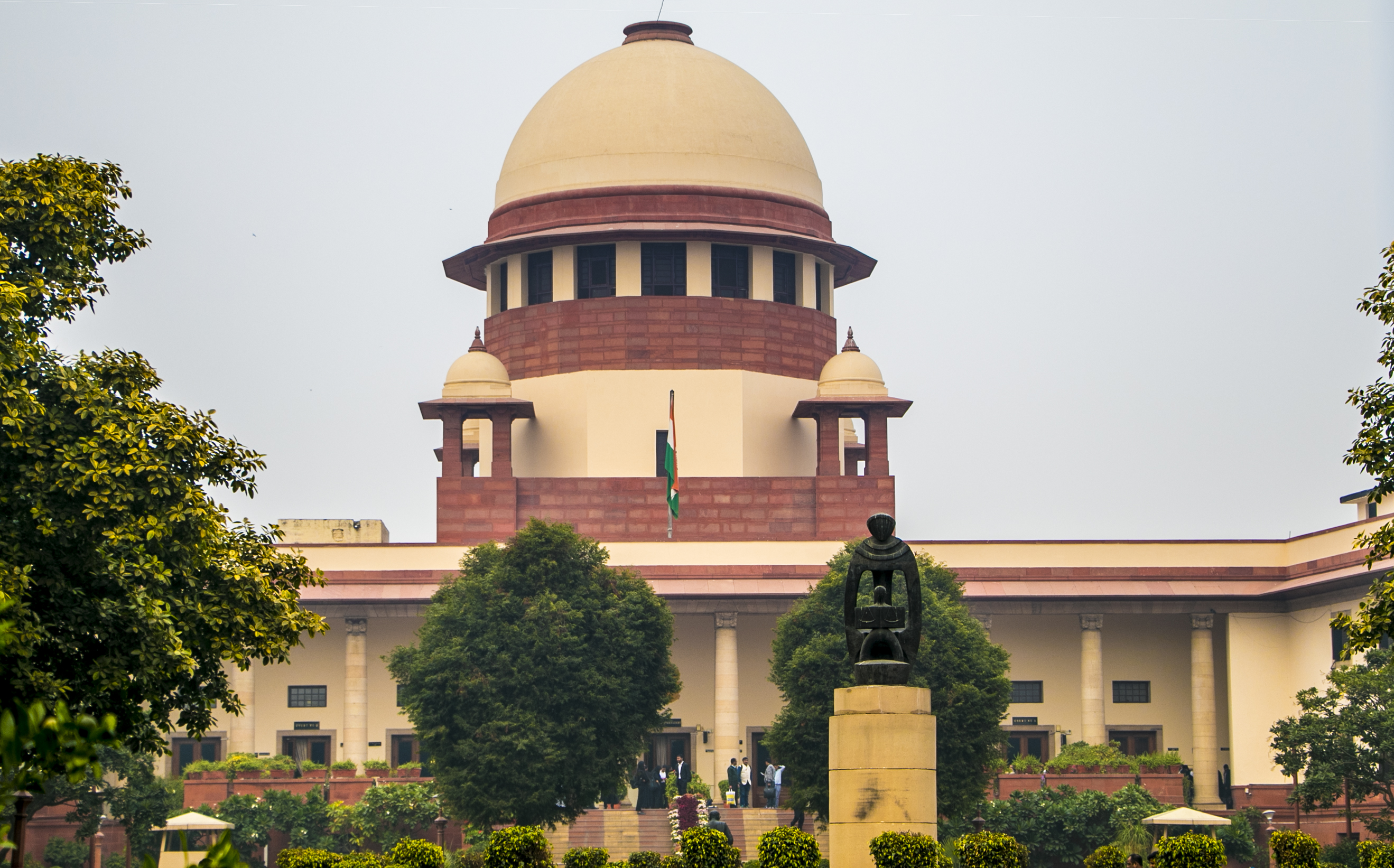In CRIM. APPEAL No. 611 OF 2022-Circumstantial evidence must be complete and incapable of explanation of any other hypothesis than that of guilt of accused: SC
Justices Uday Umehs Lalit , S. Ravindra Bhat & Bela M. Trivedi [07-11-2022]

Read Judgment: RAHUL & ANR v. STATE OF DELHI MINISTRY OF HOME AFFAIRS & ANR
Mansimran Kaur
New Delhi, November 9, 2022: The Supreme Court has stated the settled legal position that in order to sustain conviction, the circumstances taken cumulatively should form a chain so complete that there is no escape from the conclusion that within all human probability, the crime was committed by the accused only and none else.
The Larger Bench of Justice Uday Umehs Lalit , Justice S. Ravindra Bhat and Justice Bela M. Trivedi allowed the present appeals that stemmed out of the common judgment passed by the High Court of Delhi whereby the High Court while affirming the sentence of death and other sentences imposed on the Appellants-accused had dismissed the criminal appeals filed by the Appellants-accused.
The Bench was of the view that in the instant case, material witnesses examined by the prosecution having not been either cross-examined or adequately examined, and the trial court also having acted as a passive umpire, indicated that the Appellants-accused were deprived of their rights to have a fair trial, apart from the fact that the truth also could not be elicited by the trial court.
The Trial Court had convicted all the three Appellants-accused i.e., A1 Ravi Kumar, A2 Vinod @ Chhotu and A3 Rahul for the offences punishable under Sections 365/34, 367/34, 376(2)(g), 302/34 and 201/34 IPC, however had acquitted all the three from the charge under Section 377/34 IPC.
The case of prosecution was that an information was received in the Police Station Chhawla from the police control room that a girl was kidnapped in the red-coloured Tata Indica Car near Hanuman Chowk, Qutub Vihar, Chhawla and the car had proceeded towards Shyam Vihar.
The information was recorded and the investigation was entrusted to SI Prakash Chand. Accordingly, SI Prakash Chand along with the constable Rakesh reached the spot , where they met a girl named Saraswati.
On her statement being recorded to the effect that on February 9, 2012 at about 08:45 PM, when she was returning from her job at DLF Gurgaon along with her friends Pooja, Sangeeta and the victim Anamika and when they were walking near the Hanuman Chowk, a red coloured Indica Car came from behind r and pulled Anamika forcibly inside the car. There were other three or four boys sitting in the Car. On the basis of the said statement of the complainant Saraswati, an FIR was registered under Section 363 of IPC.
After completion of the investigation, a Charge Sheet was laid before the concerned court. The Trial Court convicted and sentenced them which had been confirmed by the High Court vide the impugned order. The present appeals were filed by the accused through the Supreme Court Legal Services Committee.
After hearing the submissions from both the sides, the Court noted that the entire case of prosecution rested on the circumstantial evidence, and that the victim was raped and brutally murdered.
The High Court also believing the same set of circumstances as proved further noted that the two incriminating circumstances of the DNA of a strand of hair recovered from Anamicas dead body matching DNA of Ravi and DNA generated from semen spots found on seat cover of the Indica car matching DNA profile of Vinod were overlooked by the Trial Court.
On the law pertaining to the appreciation of circumstantial evidence, reliance was placed on the judgment in Sharad Birdhichand Sarda vs. State of Maharashtra. At the outset the Court observed that having regard to the totality of circumstances and the evidence on record, it wa difficult to hold that the prosecution had proved the guilt of the accused by adducing cogent and clinching evidence.
“As per the settled legal position, in order to sustain conviction, the circumstances taken cumulatively should form a chain so complete that there is no escape from the conclusion that within all human probability, the crime was committed by the accused only and none else. The circumstantial evidence must be complete and incapable of explanation of any other hypothesis than that of the guilt of the accused and such evidence should not only be consistent with the guilt of the accused but should be inconsistent with his innocence”, the Bench said.
In the instant case, material witnesses examined by the prosecution having not been either cross-examined or adequately examined, and the trial court also having acted as a passive umpire, the Court found that the Appellants-accused were deprived of their rights to have a fair trial, apart from the fact that the truth also could not be elicited by the trial court.
The Court thus left it to the wisdom and discretion of the trial courts to exercise their powers under Section 165 of the Indian Evidence Act for eliciting the truth in the cases before them, however heinous or otherwise they may be.
Having said that and for the aforementioned reasons, the judgments and orders of conviction and sentence passed by the trial court and the High Court were set aside. The Appellants-accused were acquitted from the charges levelled against them by giving them a benefit of doubt, and they were directed to be set free forthwith if not required in any other case. As a result, the appeals were allowed.
Sign up for our weekly newsletter to stay up to date on our product, events featured blog, special offer and all of the exciting things that take place here at Legitquest.




Add a Comment